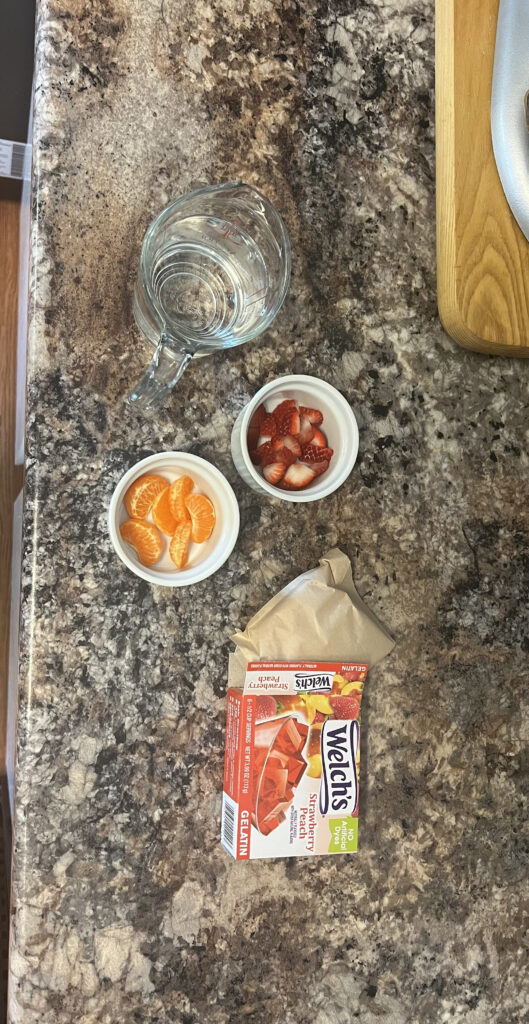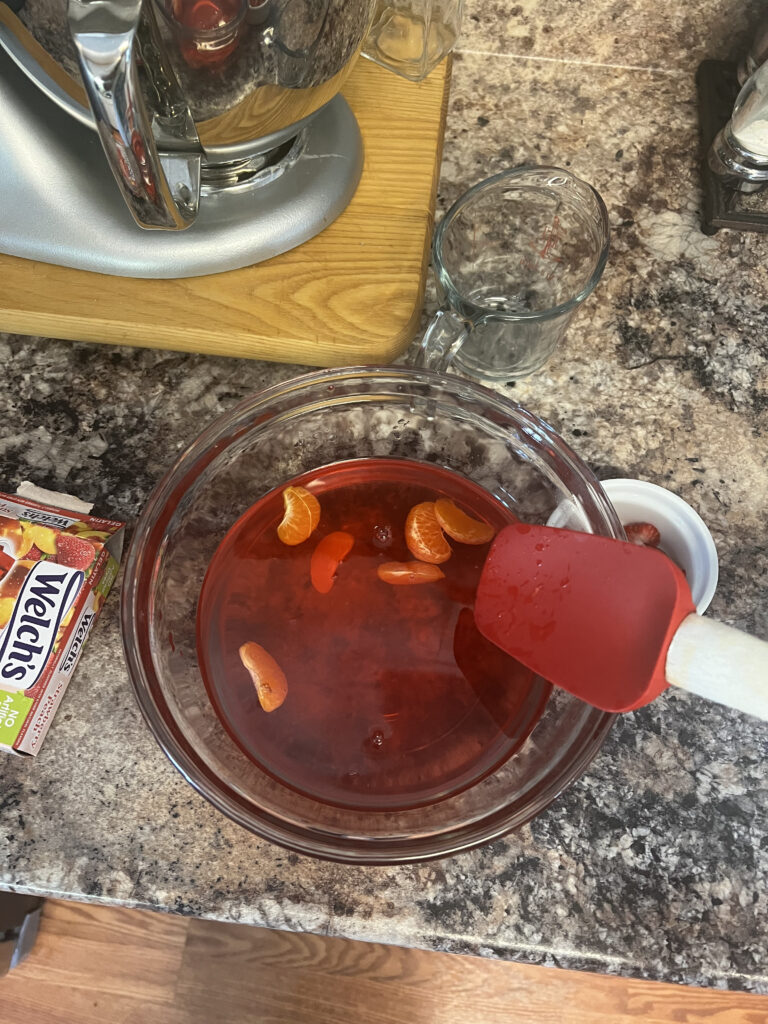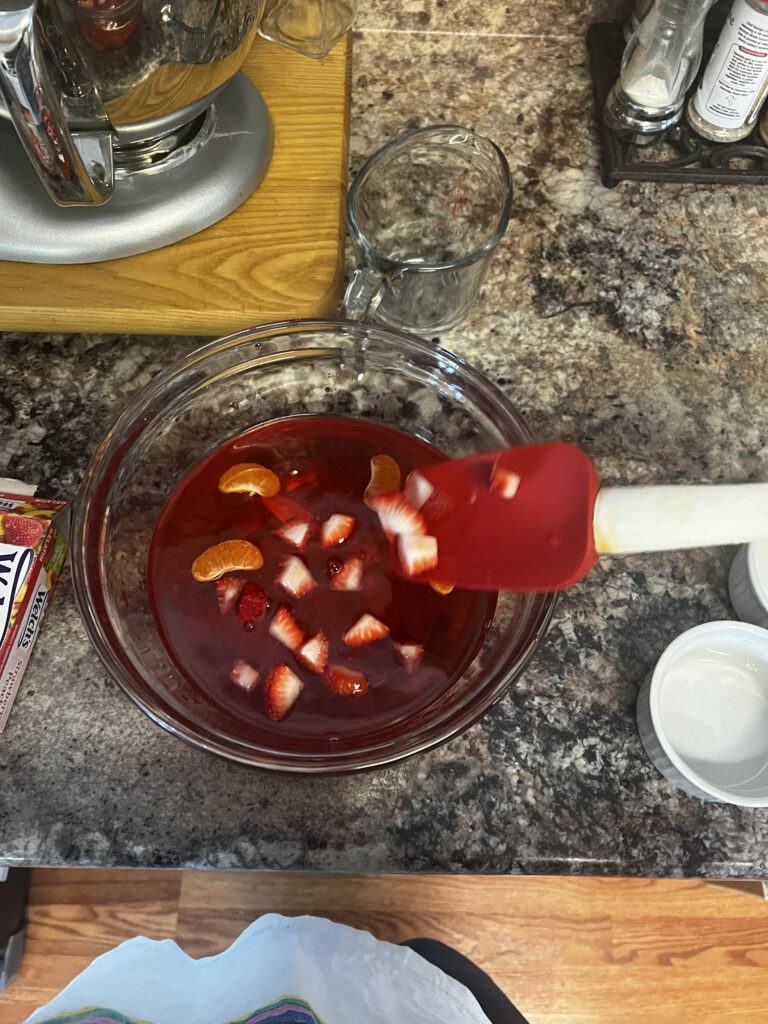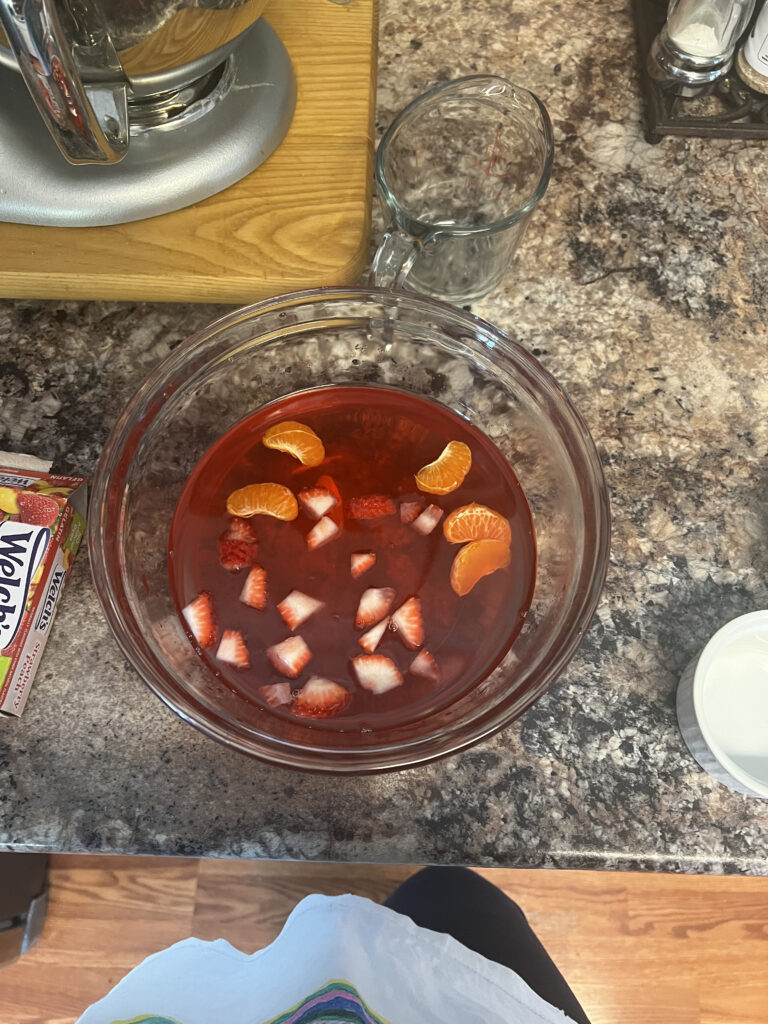Blood is made up of four main components which each have different job’s to do in the body. Whole blood is described as “the blood that runs through the veins, arteries, and capillaries.” (American society) Together, red blood cells and plasma make up most of blood’s volume. Red blood cells account for forty-five percent of blood. Red blood cells are represented by the gelatin and food coloring mixture. This easily acts for red blood cells since it is red in color and also makes the jello appear red the same way that red blood cells make blood appear red. “Red cells contain a special protein called hemoglobin, which helps carry oxygen from the lungs to the rest of the body and then returns carbon dioxide from the body to the lungs so it can be exhaled.” Plasma makes up an even higher percentage of blood’s composition at fifty-five percent. Plasma is the liquid component of blood. It is a combination of water, sugar, fat, protein, and salts. “The main job of the plasma is to transport blood cells throughout your body along with nutrients, waste products, antibodies, clotting proteins, chemical messengers such as hormones, and proteins that help maintain the body’s fluid balance.” (American society) In my project, the plasma is represented by water. Since a high amount of water is being added to the jello mixture, it is an accurate representation of the amount of plasma in whole blood. White blood cells and platelets both make up less than one percent of whole blood. (American red cross) White blood cells protect the body from infection. In my project, white blood cells are represented by a small amount of orange slices .(American society)The duty of platelets is to assist in blood clotting by “forming a platform on which blood coagulation can occur,” so that extreme blood loss is prevented. Platelets are represented by a small amount of strawberries. (American society)In order to fully understand the components of the blood, hematology must first be understood. Hematology is simply defined as “the study of blood,” but it encompasses much more than that because of blood’s varying functions. Firstly, blood is responsible for “transporting oxygen and nutrients to the lungs.” Blood can be formed into blood clots in order to prevent the body from having to undergo too much blood loss. Blood also regulates body temperature and brings waste to the kidneys and liver to be filtered through. Blood is also in charge of “carrying cells and antibodies that fight infection.” (American society) A final example of the similarities between blood and the jello mixture in my project is the way blood is made up of both liquids and solids. “The liquid part, called plasma, is made of water, salts, and protein. Over half of your blood is plasma. The solid part of your blood contains red blood cells, white blood cells, and platelets.” (medline) This matches the liquids and solids represented in my project. My project’s end result encompasses an accurate and easily understandable metaphorical structure of whole blood including each component, their structures, and percentages found in blood. This visual creates an easier understanding of what blood contains and why the specialized fluid works so efficiently in the veins, arteries, and capillaries.
References
“Blood Components.” Plasma, Platelets and Whole Blood | Red Cross Blood Services, https://www.redcrossblood.org/donate-blood/how-to-donate/types-of-blood-donations/blood-components.html.
“Blood.” MedlinePlus, U.S. National Library of Medicine, https://medlineplus.gov/blood.html.
“Hematology Glossary.” Hematology Glossary – Hematology.org, https://www.hematology.org/education/patients/blood-basics.






Overall, Oceana did a great job on her project. It looks like her abstract identified the objective very well and that she is pretty accurate in her description of the components of the blood that were covered within the course. While I am not sure if her piece goes beyond what was covered in the lecture and the lab’s, I like how she broke down the different components that made up the various cells and parts within our blood. She chose to use red Jello to represent the Red Blood Cells of the body and I think this helped her visual piece to be quite effective at being accurate. Her plasma was represented by the water but to make it a little more accurate, perhaps she could have used something with a light-yellow tinge to it, or perhaps even used food coloring to color the plasma more of a light-yellow to yellow color, however the water still conveys her message well. As far as the white blood cells were concerned, she used pieces of what looked like mandarin oranges. Although these do look appealing and tasty, I think using something that was white, like a piece of white candy or maybe even some clear gummy bears would have helped to depict the White Blood Cells a little better. To represent the platelets of the blood, she chose to use strawberries and I think this was a really good choice for representing this piece of her abstract. In the end, I think Oceana did a great job on her STEAM project and as far as the essay went, I think she did a very good job with that and her references, as well.